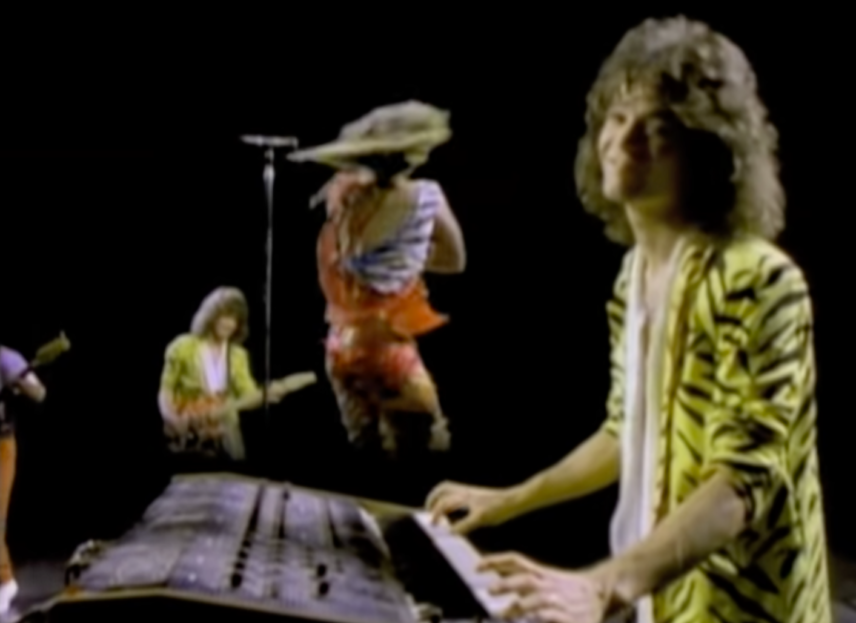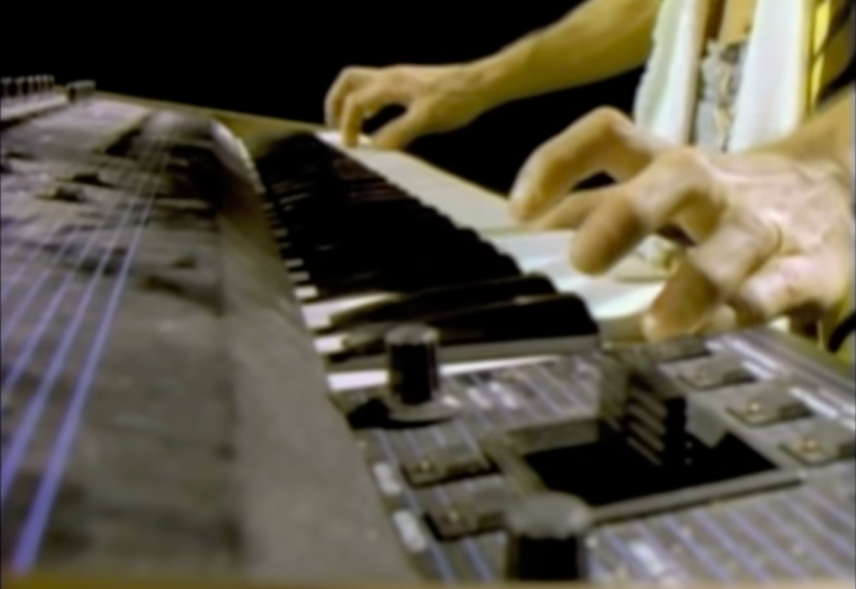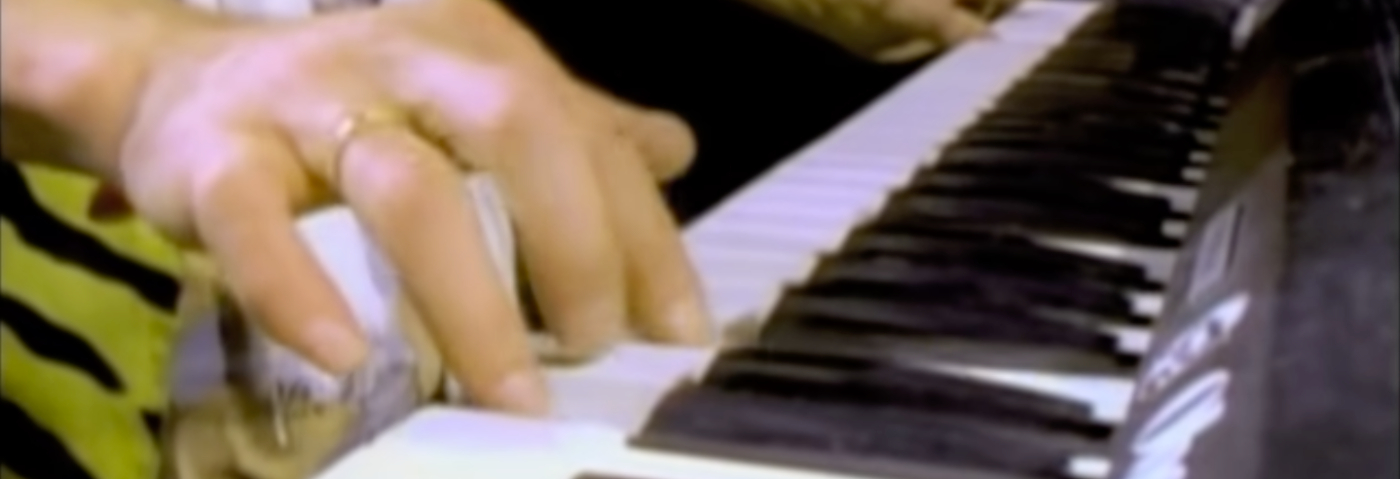Eddie Van Halen may have been known as a guitarist but his synth work also had a lasting influence on a generation of kids raised on MTV.
Eddie Van Halen, the guitarist and primary songwriter for the band Van Halen, passed away recently at the age of 65. He is being lauded (and rightfully so) as one of the best rock guitarists of his generation. With his two-handed tapping technique and arpeggio-flavoured solos, he brought guitar virtuosity to unprecedented levels and did it all while smiling. For some of us, though, it was his use of synthesizers that left the deepest impression.

Eddie Van Halen was born in Amsterdam, and moved to Southern California with his Dutch family (including brother and Van Halen drummer Alex) in 1962. The sons of a musician, Eddie and Alex were given piano lessons as children, with the hope that they would become classical pianists someday. The Van Halen brothers had other ideas in mind, and were soon learning the guitar and drums. By all accounts they were naturals, with Eddie practicing in his room for hours on end.
Van Halen the band started in 1974 when Eddie was still just 17. Within three years, thanks to heavy gigging around LA, they signed to Warner Records (with a hilarious rider attached to their contract that included insurance against paternity suits). Their early records were largely hard rock, with a guitar-dominated sound. However, Eddie hadn’t forgotten his training on the piano, and found ways to sneak the occasional keyboards or synthesizer into a song, like the distorted Wurlitzer in ‘And The Cradle Will Rock’ (1980) or the Moog Minimoog in ‘Dancing In The Street’ (1982). It’s clear that Eddie didn’t want to limit his creativity to the guitar, incredible though he was at it.
The real Van Halen synth apotheosis was soon to come. ’Jump’ was released in December 1983. Apparently Eddie’s synth riff for ‘Jump’ had been kicking around since 1981 but the band was resistant. When it was finally unleashed, it was an immediate sensation, going all the way to number one on the Billboard Top 100. In fact, it was the band’s only number-one single.

At 11 years old, hearing ‘Jump’ for the first time was a revelation for me. I’ve never been much of a fan of the sound of the electric guitar. Sure, it has its place, but ever since I can remember, it’s been all about synthesizers. The early ‘80s was the golden age of synth pop, with artists like Duran Duran, Madonna, and Prince all scoring synth-based hits. ‘Jump’ burst into my world like a runaway car through a shop wall. It was synth-based yet unquestionably hard.
The song was recorded in Eddie’s home studio using largely one synth, the Oberheim OB-Xa. First released in 1980 as a follow-up to the OB-X, the OB-Xa was the pinnacle of Tom Oberheim’s big polysynths. Thanks to the analogue nature of the circuitry, it was capable of absolutely massive sounds. It was popular with the rock musicians of the time, with Queen and Prince both favouring it as well. It also had the depth and power to compete with loud guitars onstage. It’s clear why Eddie would be drawn to it.
Thanks to the analogue nature of the circuitry, the Oberheim OB-Xa was capable of absolutely massive sounds.
The song had near-constant airplay on MTV, and for a latchkey kid with not much to do after school, MTV was both babysitter and dream maker. Much of the video was the usual staged live performance, with the band members mugging and miming with unplugged instruments, but for me, it was all about the synth solo. Despite its dominating role in the song, the Oberheim was kept largely out of the limelight—except for the solo. With the camera parked low over the keys and the Oberheim logo clearly legible, it was an incredible advertisement for a musical lifestyle. The knobs, the pin-stripe detailing, the unusual pitch bend and modulation paddles—they were all beacons calling me towards a lifelong obsession with synthesizers.

And then there was the solo itself. Much like Eddie’s guitar solos, it was largely a series of arpeggios. Certainly nothing musically complex. And yet the harmonic simplicity of it—paired with the image of his liquid fingers gliding over the keys—reached into my soul and grabbed hold. It’s still my favourite part of the song, and I’m still a sucker for arpeggios.
To this day, my image of the ‘ultimate’ synth is still the Oberheim OB-Xa. The styling, the pedigree, and of course the sound all still resonate. They were expensive at the time and continue to be, so thankfully there’s Arturia’s OB-Xa V emulation to keep us peasants satisfied. Behringer has also promised us a clone, the UB-Xa.
Van Halen would release a number of other songs that featured synthesizers but ‘Jump’ is still the most impressive. It was a huge risk for Van Halen at the time, particularly since it was such a departure in sound for them, with most of the usual guitar parts replaced by the Obie. Even if it had flopped, its work would still have been done for this synth nut. As I sit here writing this, I am literally surrounded by synthesizers, and ‘Jump’ is a big reason for that.
